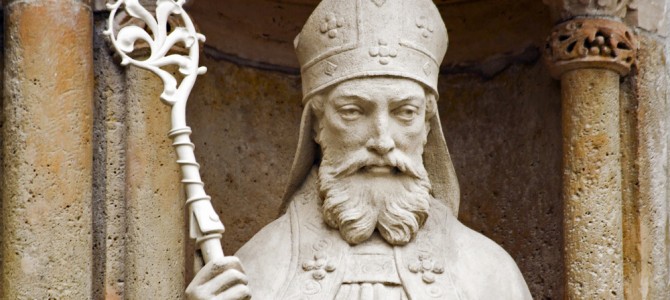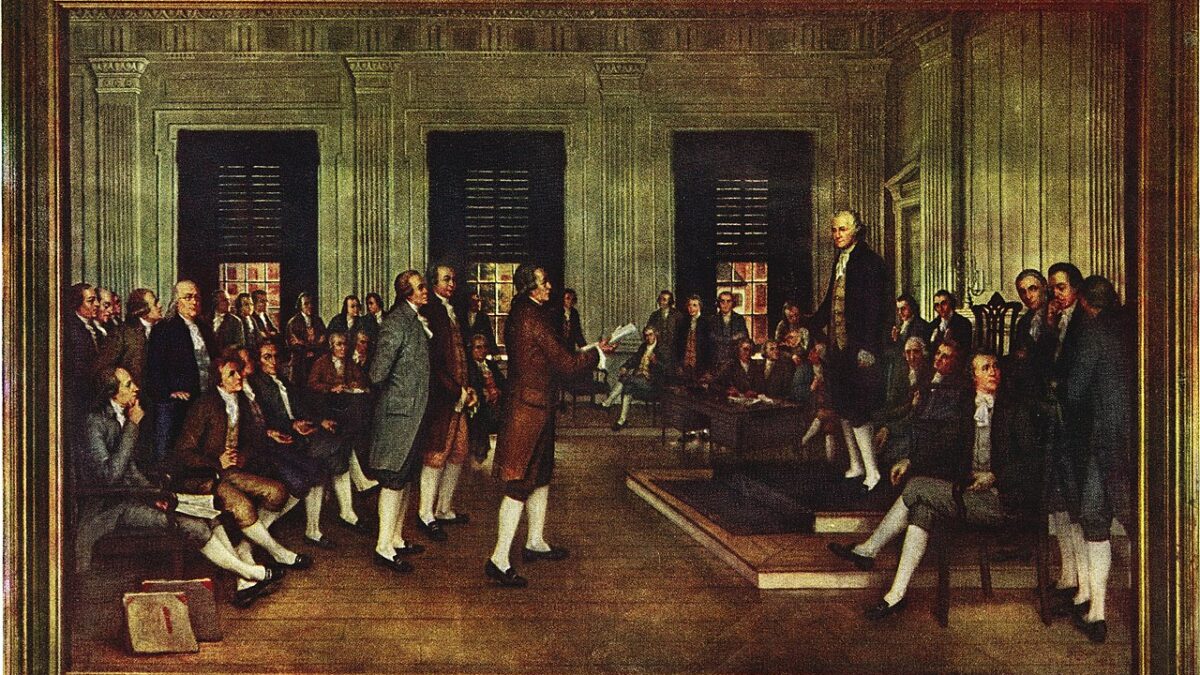
Santa Claus, that secular hero and icon of the Christmas season, has roots in some of the earliest history of Christianity and religious Christmas celebrations. Over the past 150 years, though, traditions centered around faith and remembrance of a holy man have shifted to those of a cartoonish, gift-giving inhabitant of the North Pole. Unsurprisingly, the changes in our view of the role of Santa and the saint who inspired him have paralleled the increasing commercialization of Christmas.
The beginnings of the story of Saint Nicholas go back to the fourth century AD. Much of what we know about St. Nicholas is a blend of history, tradition, and myth. We know that he lived in Myra, Lycia, in what is now Turkey and that he died in 343. He was a bishop at the end of his life. During his time as bishop, he was widely regarded as generous, interested in helping the poor, and a staunch defender of Christian doctrine about the Trinity.
From Saint Nicholas to Santa Claus
Many Christians are familiar with the Nicene Creed. This set of belief statements date back to 325 AD, making it one of the oldest creeds in Christianity—and it was signed by Bishop Nicholas of Myra. At the Council of Nicea, while discussing what should be included in the creed, tradition holds that he argued with the heretical Arius over nature of the relationship between God the Father and God the Son, Jesus. In some accounts, this became so contentious Nicholas struck Arius, and not with a candy cane. For this offense, he was removed from the proceedings until some of the other bishops present had dreams that he should be reinstated.
The most popular tradition about Saint Nick is that he gave a poor family money secretly at night. He did this three times for this family so they had dowries for three daughters to marry well and escape the hardships of poverty. Other generalized tales of his willingness to help the poor and disadvantaged are abundant, despite sometimes being short on concrete details.
It may seem strange that a former monk and bishop became the basis for the jolly gift-giving man we now describe as Santa, but many of our modern traditions have elements of the life and early stories of Saint Nicholas. Leaving stockings on the mantel to be filled in the dead of night ties back to the dowries for the three girls in Myra. According to some versions of the story, the bishop tossed a bag of coins into the home, and it landed in one of the daughters’ stockings.
While traditions for honoring the life and kindness of Nicholas vary across the world, observing December 6 as the anniversary of his death is a long-standing and widely kept global tradition. It is from these traditions that Saint Nick—and later Santa—came to America. Commemorating Saint Nicholas remained particularly important for Dutch and German Christians. From these immigrants’ traditional pronunciations of Saint Nicholas came the American name for Santa Claus. A poem in 1823 helped shift the idea from a saint leaving chocolate coins in shoes on the anniversary of his death to the Christmas Eve gift-giver most of us know today.
The image of Santa has changed a lot since his first introductions. By the 1920s, his image was standardized to the jolly older man in a red suit, riding in a sleigh to deliver gifts to good little boys and girls. He is no longer most commonly remembered as a serious saint who angrily slapped a heretic over false teachings. Nor is the first image of Santa Claus for most people a church father quietly helping the poor.
It’s Okay to Celebrate Santa
Behind the cheery Christmas carols, movies, and greeting cards, does the modern Santa hold any value for observant Christians? Does setting up the idea of a mythical man in the remote North Pole, busy with elves making presents and watching over behavior, have a place in the lives of our children?
I say yes.
This holiday tradition is not going away culturally, and for good reason. Behind the elves, reindeer, flowing white beard, and red suit lie messages about faith and redemption. The story of Santa is one of generosity and blessing. It encourages children to wish and hope for things that normally are totally out of reach. Santa also helps provide a reason to consider how they treat others.
Telling children about Santa and other traditions doesn’t set them up for a life of distrust. It reinforces the ideals of good and bad long before they are capable of grasping abstract ideas. Children raised in Christian homes are familiar with the themes and core message of Santa. Santa and his elves joyfully give children gifts they’ve lovingly made. In a world full of trials and hardship, the happiness and joy of Santa is a good thing for children.
Remember Saint Nicholas, bishop and defender of the Christian faith, on December 6. Talk about the Christian doctrine of the Trinity, St. Nicholas’ devotion to Christ, and his passion for helping the poor. Remind your kids that people need their help this holiday season. Then leave out the milk and cookies on Christmas Eve and see what Santa has in store for them.









